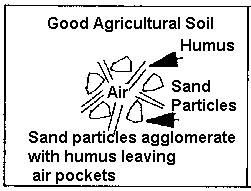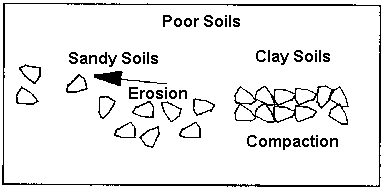| |
Sustainable Wastewater Management
| Pollution prevention |
 |
| water minimization at source |
 |
through |
 |
REDUCE
of water or minimization
 |
Decentra-
lized System |
 |
REUSE
for surface irrigation, ground water recharge, industrial processes, toilet flushing etc. |
 |
Centralized
System |
 | |
 | | |
Conservatory
technologies, wetlands, composting
toilets etc. |  |
RECYCLE
of organic wastes, of water etc. | | |
Conclusions
- The selection of a sanitation technology has to take into account the economic, environmental and
social-cultural conditions (psychology, religion and gender) of the community and have to involve
its participation with a continuous approach from design to implementation. The community needs
to be shown that there are alternatives that can work even better, than systems of the past.
- Systems that require low cost technologies for wastewater treatment are feasible alternative to
be applied in small villages and rural areas of our countries.
- Professionals in wastewater management and waste have the responsability to develope sustainable
sanitation projects.
- The broad technologies about decentralized and onsite wastewater systems have to be appropriately
covered in university engineering curricula, because public health officials, engineers, regulators,
system designers, inspectors, and developers often possess only limited knowledge about these.
Recommendations:
To achieve a sustainable wastewater management, centralized, decentralized and onsite
systems have to fulfill principles of reduction, reuse and recycle of water and wastewater
during each step of treatment.
Composting toilets and processes
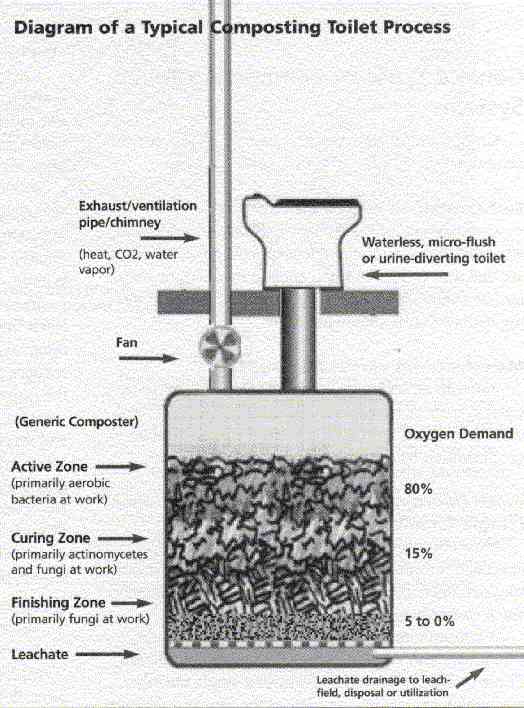
Properties of the two SIRDO systems
| Dry SIRDO | Wet SIRDO |
- Waterless sanitation
- Aerobic decomposition of human manure
- Organic matter is added in the composting toilet
- Produce a biofertilizer free of pathogens
- No use of water for sewage
|
- Organic and fecal matter will be aerobically decomposed even when water
is used for the toilets as the black water sediments (about 1 month) until the water is evaporated,
the sludge is used as inoculum for composting.
- Grey water is collected seperately, it can be easily biologically treated by a reed bed filter (natural wastewater treatment)
and reused for irrigation or flushing toilets.
|
As in the composting toilet there is too much liquid, sawdust should be added or you separate the urine by no-mix toilets (see pictures below).
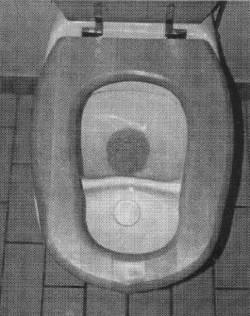 | |
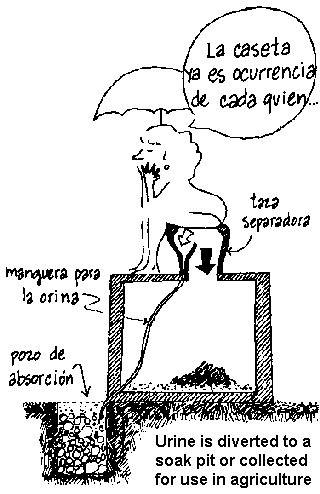 |
No-mix-toilet (BB Innovation, Sweden) |
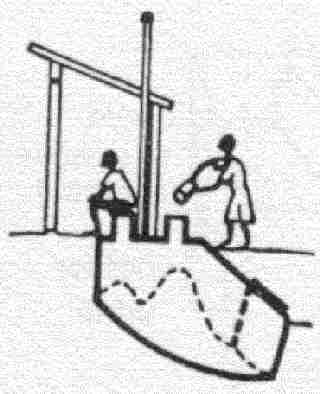 | |
The concept of joint recycling
of human excreta and kitchen
refuse | |
Composting process
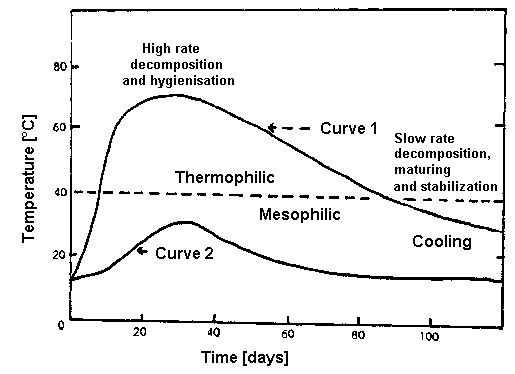
Thermal deathpoints of pathogens and parasites:
| Organisms | Temperature [°C] | Time in minutes |
| Salmonella typhosa | 55 - 60 | 30 |
| Salmonella spp. | 56 | 60 |
| Shigella spp. | 55 | 60 |
| Escherichia coli | 55 | 15 - 20 |
| Streptococcus pyogenes | 54 | 10 |
| Mycobacterium diphteriae | 55 | 45 |
| Brucella abortus or suis | 61 | 3 |
| Endamoeba histolytica (cysts) | 55 | |
| Taenia saginata | 55 - 60 | 5 |
| Trichnella spiralis | 62 - 65 | |
| Necator americanus | 45 | 50 |
| Ascaris lumbricoides (eggs) | 60 | 15 - 20 |
| Source: Gulueke 1977 |
Differences between mature and raw compost:
| Mature compost | Raw compost |
| Nitrogen as nitrate ion | Nitrogen as ammonium ion |
| Sulphur as sulphate ion | Sulphur still in part as sulphide ion |
| Lower oxygen demand | Higher oxygen demand |
| No danger of putrefaction | Danger of putrefaction |
| Nutrient elements are in part available to plants | Nutrient elements not available |
| Higher concentrations of vitamins and antibiotica | Lower concentrations of vitamins and antibiotica |
| Higher concentrations of soil bacteria, fungi, which are decomposed, easily degradable substances | Higher concentrations of bacteria and fungi, which decompose organic materials |
| Mineralizaion is about 50% | High proportion of organic substances not mineralized |
| Higher water retention ability | Lower water retention ability |
| Clay-humus complexes are built | No clay-humus complexes generated |
| Compatible with plants | Not compatible with plants |
Increase of soil quality by the use of compost:
Compost may be used on land for the following purposes: agriculture, horticulture, home gardening, vegetable gardening, viticulture, landscaping, landfill, forestry
or commercial farming. It is usually applied as mulch, soil conditioner or fertilizer for many of these applications.
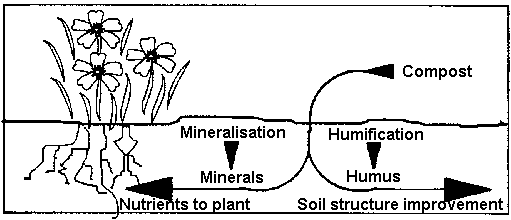
| |





